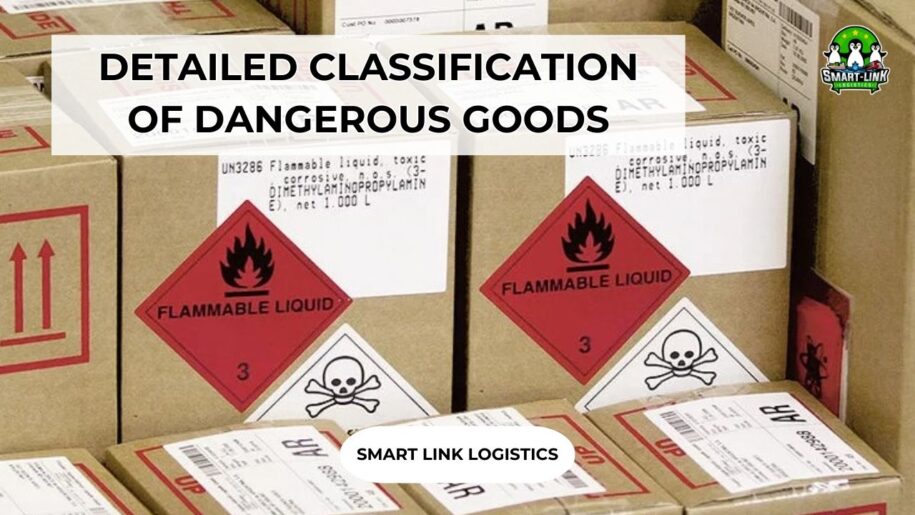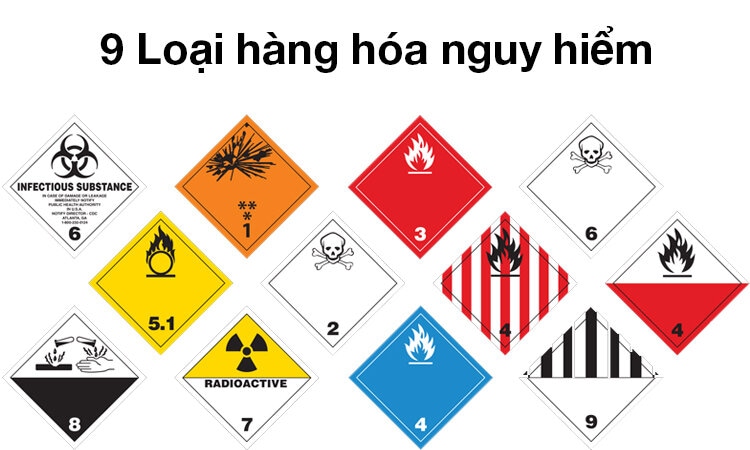
DETAILED CLASSIFICATION OF DANGEROUS GOODS
Dangerous goods, with their diversity and complexity, play an essential role in global life and the economy. From chemicals, explosives, and toxic gases to hazardous food items, these goods significantly contribute to the development of various industries. In this article, we will explore the classification of dangerous goods.
What Are Dangerous Goods?
Dangerous goods are materials or items containing substances that pose potential risks during transportation. These may include explosive, flammable, toxic, infectious, or corrosive substances. Such goods can threaten human lives, health, environmental safety, and national security. Therefore, they must be carefully packaged, labeled, and handled throughout the transportation process.

Classification of Dangerous Goods
Based on their physical and chemical properties, dangerous goods are classified into nine groups:
Group 1: Explosives
This category includes substances and materials capable of causing explosions, such as fireworks. Explosives are further divided into six subgroups based on their level of danger.
Group 2: Gases
This group comprises compressed gases, liquefied gases, such as gas cylinders and fire extinguishers. They are classified into flammable gases, non-flammable gases, and toxic gases.
Group 3: Flammable Liquids and Desensitized Liquid Explosives
Includes substances like paint, oil, and gasoline, which have high flammability.
Group 4: Flammable Solids and Substances Reacting with Water
These are materials that easily ignite, self-combust, or produce flammable gases when in contact with water, such as sulfur and matches.
Group 5: Oxidizing Substances and Organic Peroxides
Includes substances like fertilizers, which can stimulate combustion when in contact with other materials.
Group 6: Toxic and Infectious Substances
This category includes toxic materials such as pesticides and infectious substances like blood samples for testing.
Group 7: Radioactive Materials
Substances capable of emitting radiation harmful to human health and the environment fall into this category.
Group 8: Corrosive Substances
Includes materials that can damage other materials and harm living organisms, such as bleach.
Group 9: Miscellaneous Dangerous Goods
This group includes hazardous materials not classified under the above categories.
Conclusion
You can determine the classification of a particular item by referring to Section 14 of the Material Safety Data Sheet (MSDS) or the labels on the goods. Even the packaging of dangerous goods, if not thoroughly cleaned after use, is still considered hazardous.
If you need legal support or assistance with customs procedures in import-export activities, please contact Smart Link Logistics for fast and efficient consultation. With over 14 years of experience in the transportation field, we are proud to accompany you throughout your journey.
Hotline: + 84 935 766 039 to know more about our services

If you require assistance with international import and export of goods, please contact our team at Smartlink Logistics. We are available to provide you with professional guidance on our services and the necessary customs procedures.
SMART LINK: BEST SERVICE BEST YOU


































